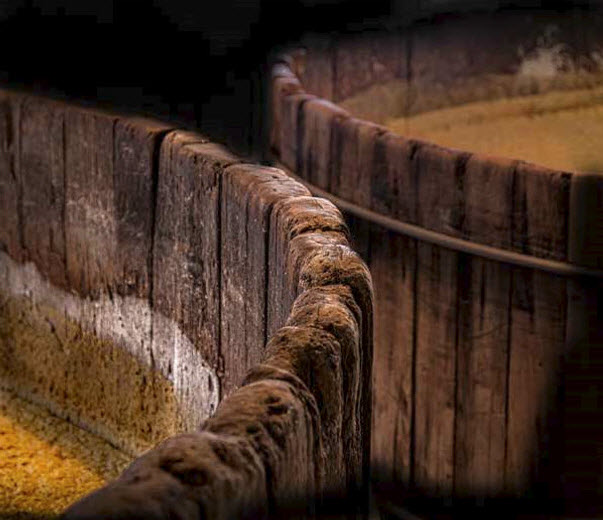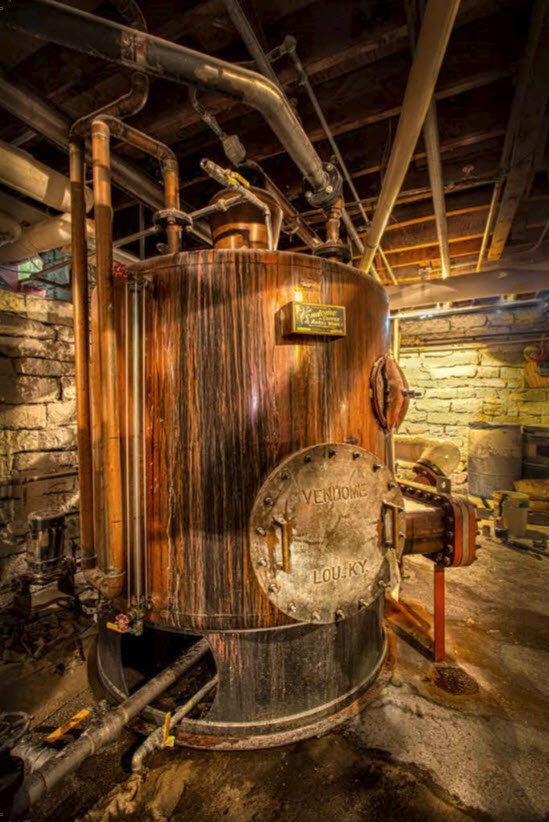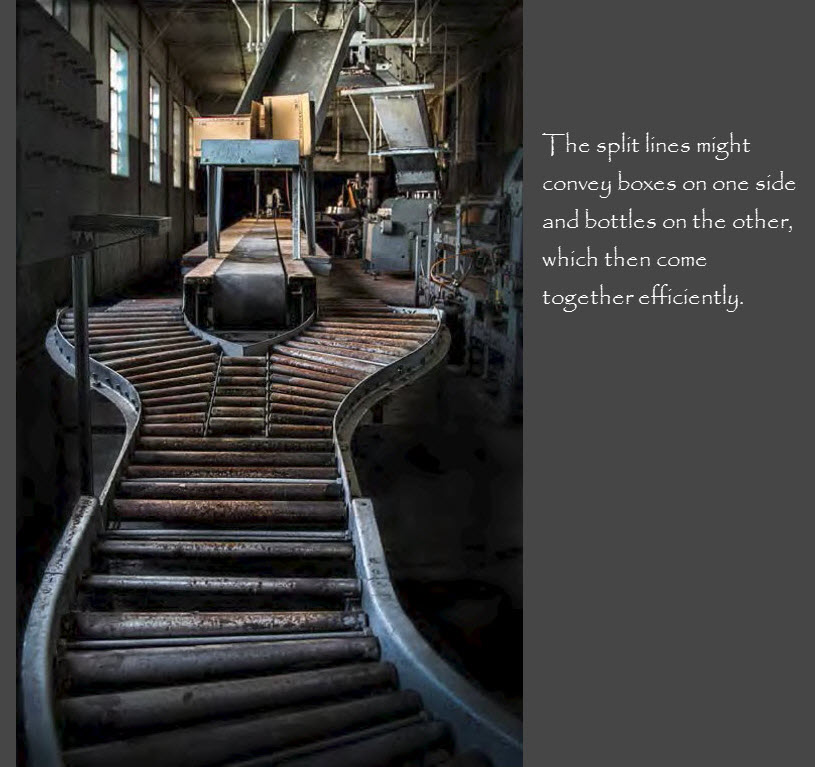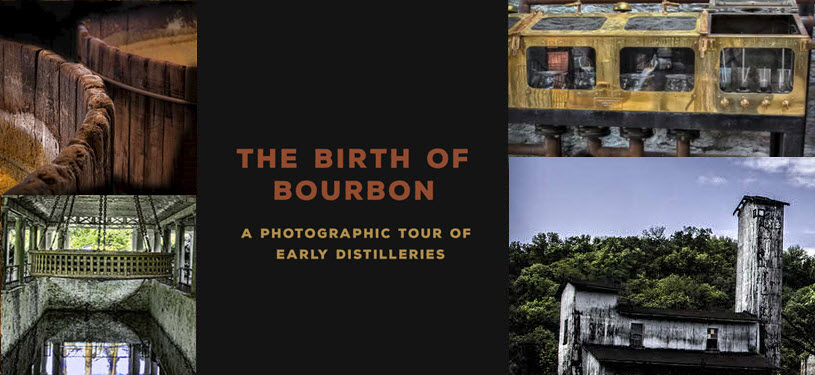
Kentucky is home to more barrels of bourbon than people, and ninety-five percent of all of America’s native spirit is produced in the Bluegrass State. More than two hundred distilleries once operated in Kentucky, but only sixty-one survived Prohibition. Though the businesses were gone, most of the buildings remained, unused, slowly deteriorating for decades. Now, thanks in large part to the explosion of interest in craft spirits, many of these historic buildings are being brought back to life, often as new distilleries. With progress, however, comes loss, and the record of what existed at these sites across the Bluegrass State is disappearing just as more and more people are interested in bourbon’s history.
Award-winning photographer Carol Peachee has documented many of these sites in The Birth of Bourbon: A Photographic Tour of Early Distilleries. She memorializes Kentucky’s oldest distilleries with her camera, capturing their architectural and mechanical wonders. Rather than viewing the industrial sites as merely remnants of the past, Peachee treats each space as an archeological find as she follows the ghosts of proud laborers through Kentucky’s bourbon history. By capturing Kentucky’s abandoned distilleries in intimate images, she documents these incredible historic sites that are rapidly vanishing or being irrevocably changed.
Here are a few select photographs from this exquisite book. This is a great addition to anyone’s bookshelf or coffee table that appreciates the art, craft, and history of the distilled spirits business. You can order the entire The Birth of Bourbon: A Photographic Tour of Early Distilleries collection of photos here.
C.S. Lewis, the author of The Chronicles of Narnia, wrote of books that had “baptized” his imagination. Carol’s photographs baptize the imagination for what the Distillery District and the Bluegrass region can yet become. They are a distillation of the region’s history and its potential. Where do we find art? In these pages.
~ Jim Gray Mayor of Lexington, Kentucky
The Old Taylor Distillery Company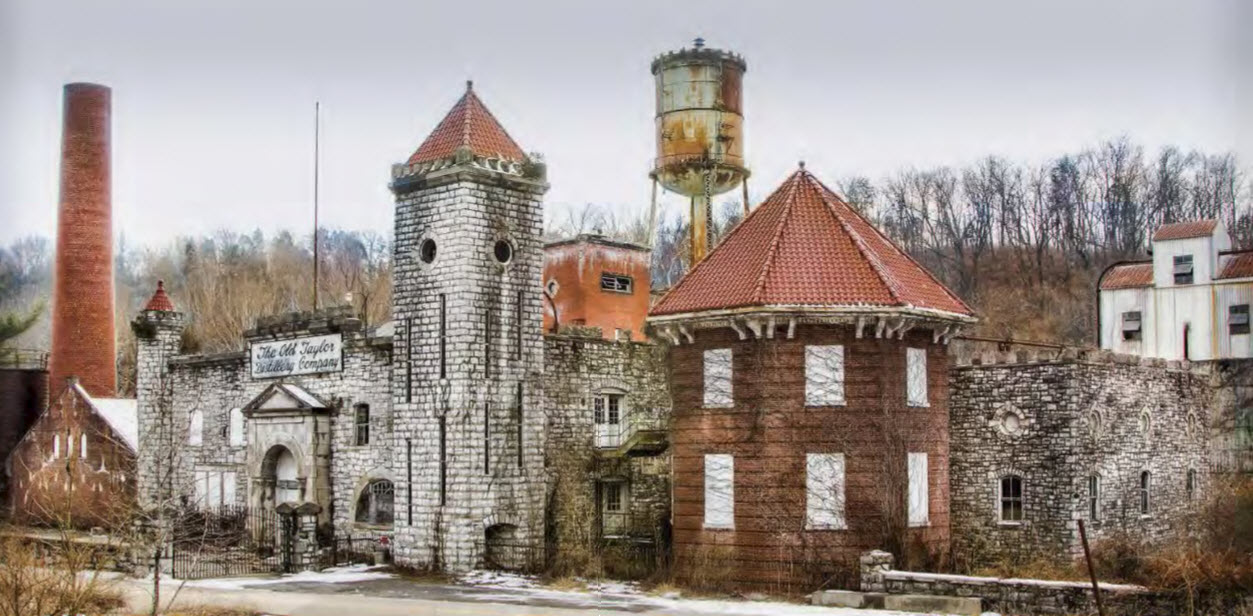

Old Taylor Distillery, Woodford County. A full view of the distillery shows the lengths that Taylor went to to create his distillery castle. The main attraction is of limestone block; the oven house to the left and offices to the right are of brick. A grain house is in the far right corner, and the water tower, with its crenellation, is in the middle background.
Old Prentice Distillery Fermentation Tanks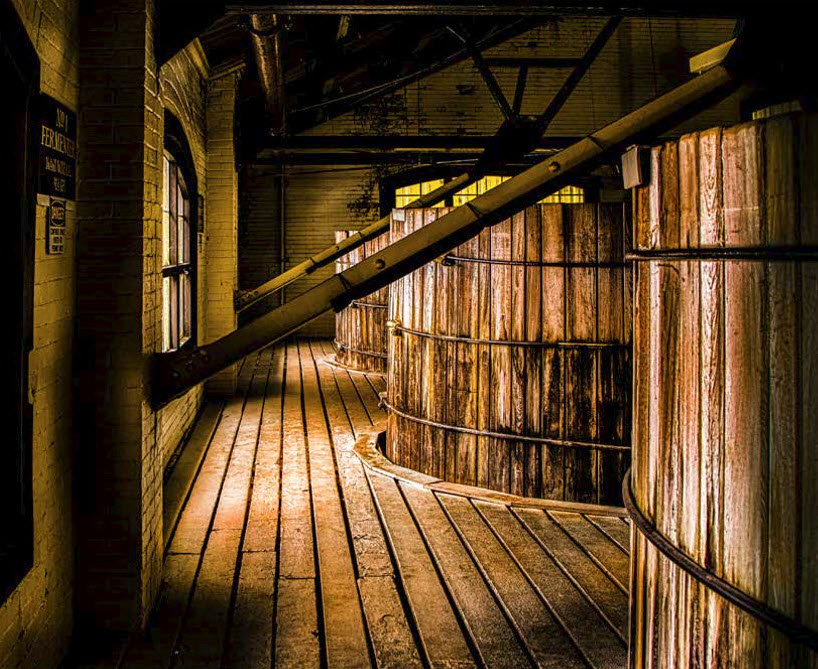

Fermenting room, Old Prentice Distillery, Anderson County. Inside the Old Prentice Distillery there were basically two rooms: the fermenting room and the stillroom. Later, bottling and offices were located in other buildings. The fermenting room in the NRHP area of Old Prentice still uses cypress tubs.
Stay Informed: Sign up here for our Distillery Trail free email newsletter and be the first to get all the latest news, trends, job listings and events in your inbox.
The Birth of Bourbon: James E. Pepper Distillery
George T. Stagg Distillery Warehouse Plumb
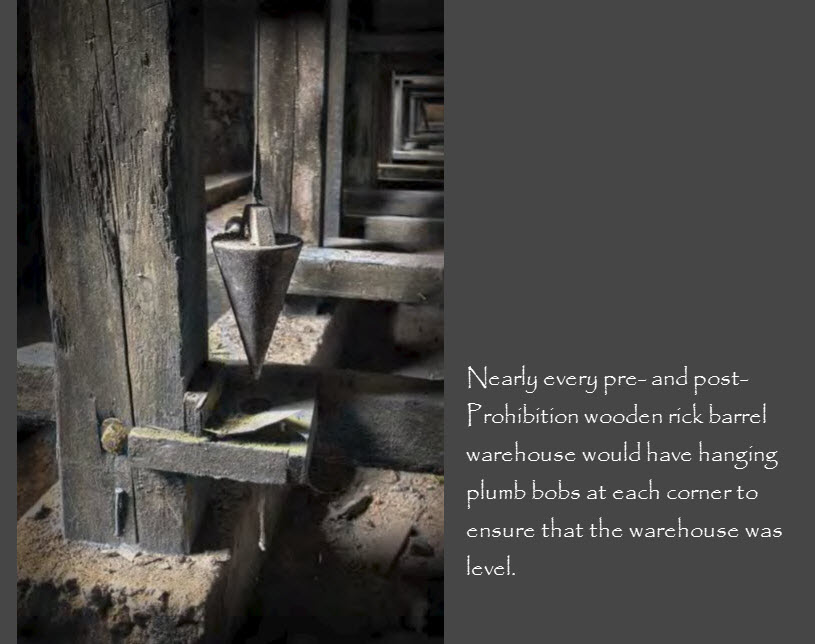

Warehouse plumb bob, George T. Stagg Distillery, Frankfort. Nearly every pre- and post-Prohibition wooden rick barrel warehouse would have hanging plumb bobs at each corner to ensure that the warehouse was level. In the oldest warehouse at G. T. Stagg, Warehouse B, this plumb bob indicates all is well.
Related Story
The Birth (& Death) of Bourbon Beautifully Archived in Coffee Table Book – Includes a unique audio interview with the book’s photographer and author, Carol Peachee.
Old Oscar Pepper Pot Still
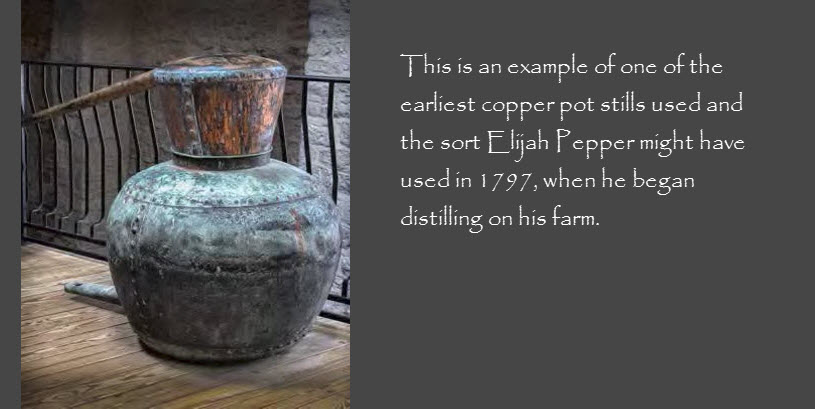

Old pot still, Old Oscar Pepper Distillery/Labrot and Graham Distillery, Woodford County. This is an example of one of the earliest copper pot stills used, a relic now on display, and the sort Elijah Pepper might have used in 1797, when he began distilling on his farm. It sits waist-high next to modern stills installed by Brown-Forman that are almost two stories high.
Old Oscar Pepper Tail Box
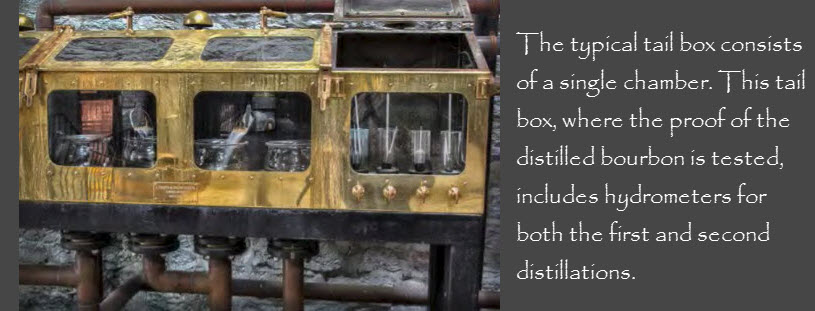

Old pot still, Old Oscar Pepper Distillery/Labrot and Graham Distillery, Woodford County. This is an example of one of the earliest copper pot stills used, a relic now on display, and the sort Elijah Pepper might have used in 1797, when he began distilling on his farm. It sits waist-high next to modern stills installed by Brown-Forman that are almost two stories high.
J.E. Pepper Distillery Exposed Boiler Pipes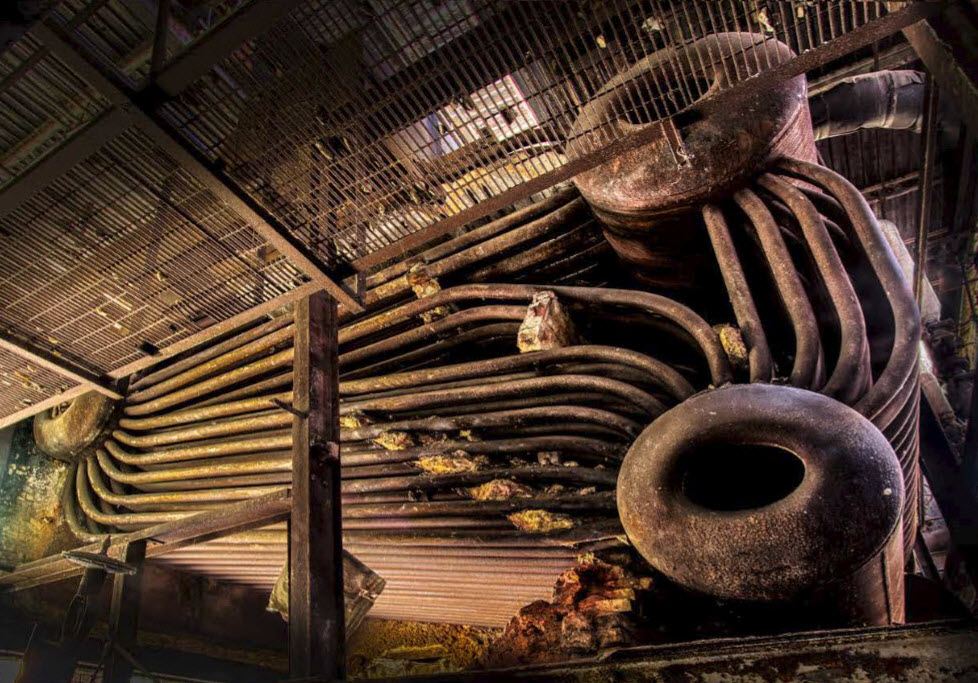

Exposed boiler oven pipes, J. E. Pepper Distillery, Lexington. The piping of the boiler ovens that powered the plant was revealed in 2013 when the bricks around the ovens were removed during demolition.
Atherton Distillery Bonded Warehouse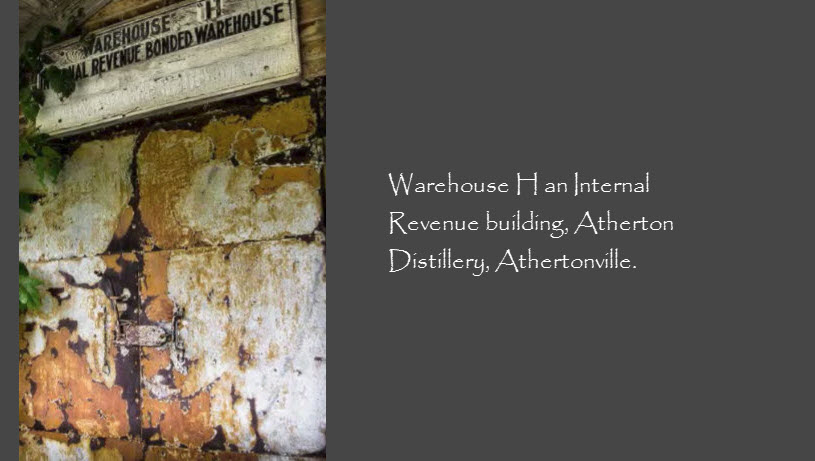

Warehouse H and Internal Revenue building, Atherton Distillery, Athertonville. Down the road from the main distillery are several buildings once a part of the distillery complex and now in the hands of separate owners. Warehouse H joins the old cistern room in a single structure, currently used for storage.
Burks’ Springs Distillery Cedar Tanks
Fermenting tubs, Burks’ Spring Distillery, Loretto. After grains are cleaned, weighed, and mixed according to the particular recipe, or mash bill, they are ground and cooked. The mash is then cooled and added, along with yeast, to fermenting tubs to create a fermented grain beer. These fermenting tubs of cypress and related woods were the types used in early distilling. Later distilleries replaced the wooden tanks with metal tanks that were easier to clean.
Burk’s Springs Distillery Vendome Still
Still I, Burks’ Spring Distillery, Loretto. Still design has evolved from simple pots to the massive tanks and columns seen in today’s distilling processes. In some instances both the pot and the column stills are used. Two stills in the basement of the still house, the original foundation of Burks’ Mill of 1805, are replicas of stills used by the Samuels family in their early distilling days.
Dowling Distillery Warehouse Ruins
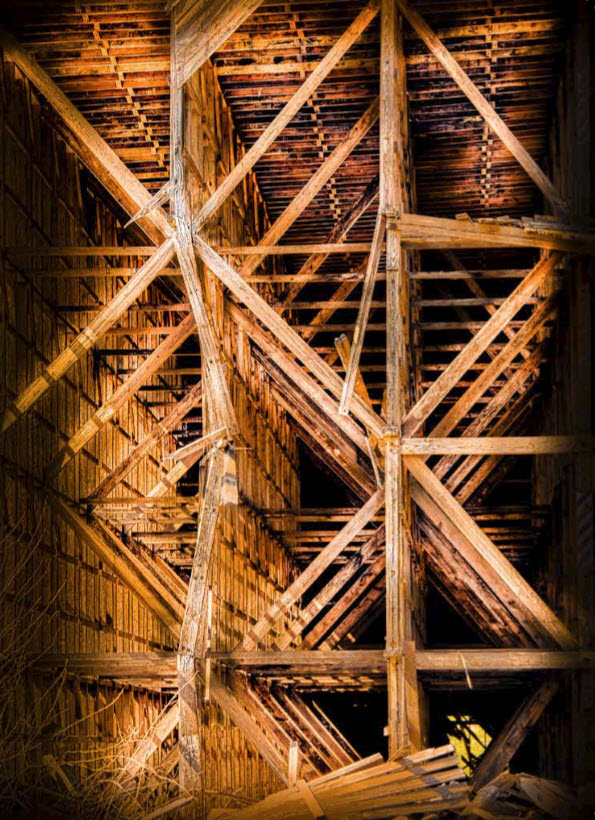
Warehouse scaffolding, Dowling Distillery, Burgin. Once the siding was removed from the warehouse, the rick barrel-aging system could be seen from the ground floor up to the roof.
George T Stagg Distillery Along the Banks of the River
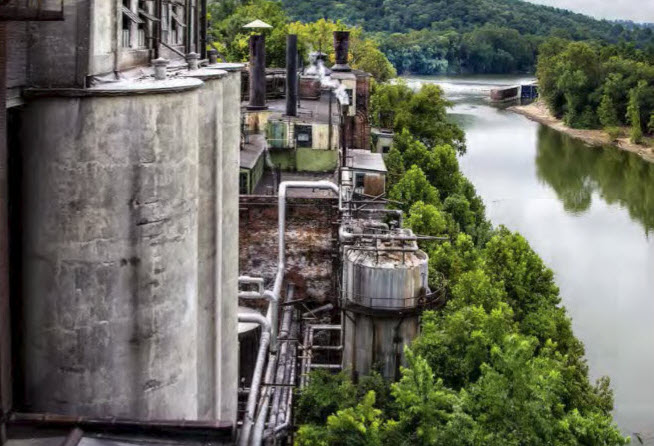

River view, George T. Stagg Distillery, Frankfort. Over time there have been five different distilleries in this location. In this view George T. Stagg expansions extend into the foreground. The front of the Stagg distillery faces the river for easy access to river loading. Downriver one can see the locks built by Commander Richard Taylor (not to be confused with E. H. Taylor) in the distance.
J.E. Pepper Distillery Brick Kilns Used to Dry Spent Grain
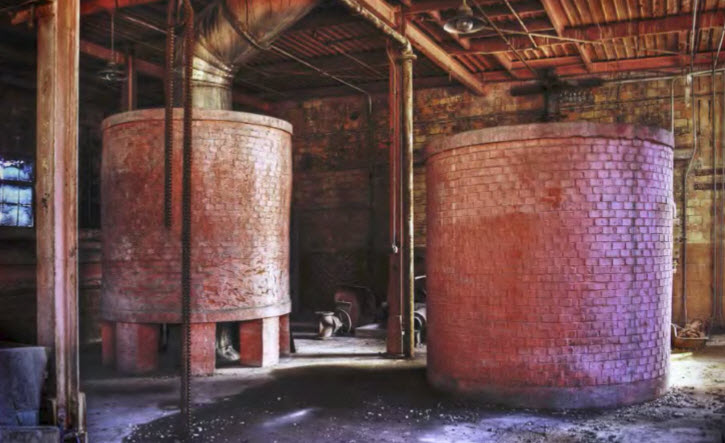
Two pink kilns, J. E. Pepper Distillery, Lexington. These brick kilns were upstairs in the dry room, and their function can only be inferred; they were perhaps used instead of mill presses to extract moisture from spent grain before converting it to feed.
J.E. Pepper Distillery Exposed Boiler Pipes

Exposed boiler oven pipes, J. E. Pepper Distillery, Lexington. The piping of the boiler ovens that powered the plant was revealed in 2013 when the bricks around the ovens were removed during demolition.
J.E. Pepper Distillery Knobs and Pipes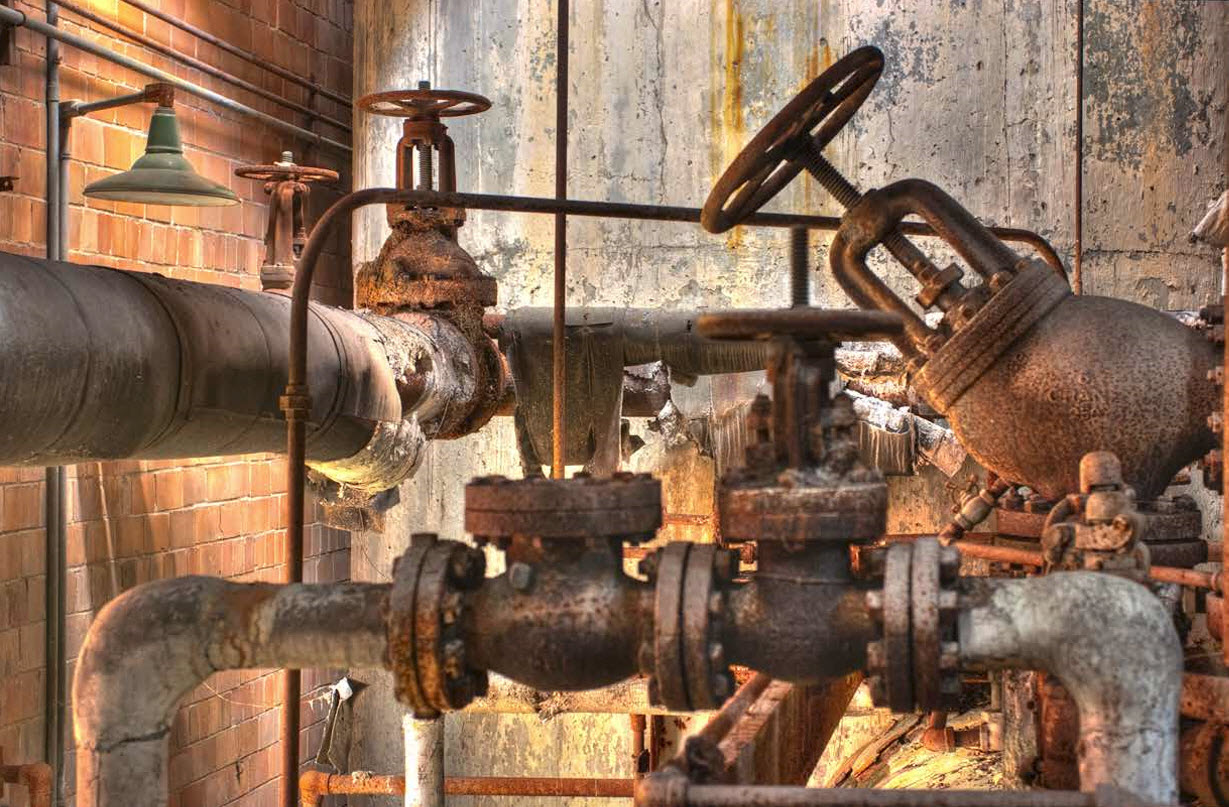

Knobs and pipes, J. E. Pepper Distillery, Lexington. Throughout all the distilleries I photographed there were hundreds of knobs, pipes, valves, and sockets. Although these elements seem trivial, they control the production flow within the distilleries.
Old Crow Distillery Machine Room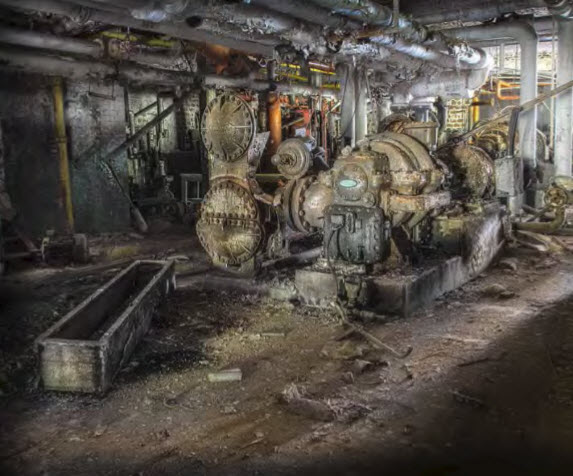

Machine room, Old Crow Distillery, Woodford County. Deep within the lower levels of the distillery is the machine room; its engines and turbines provide additional power to the complex.
Old Prentice Distillery Ice Formation
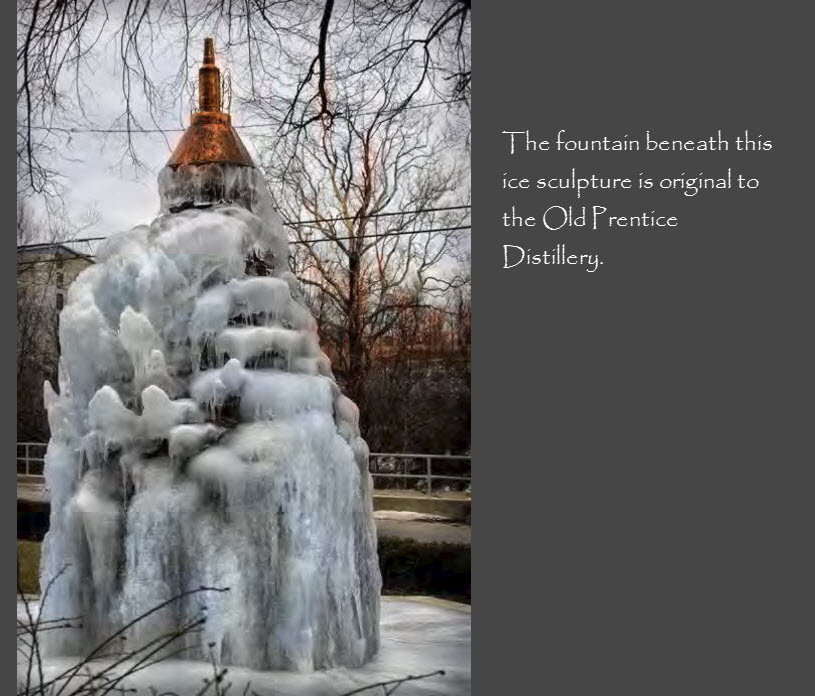

Iced fountain, Old Prentice Distillery, Anderson County. The fountain beneath this ice sculpture is original to the Old Prentice Distillery.
The Old Taylor Distillery Oven
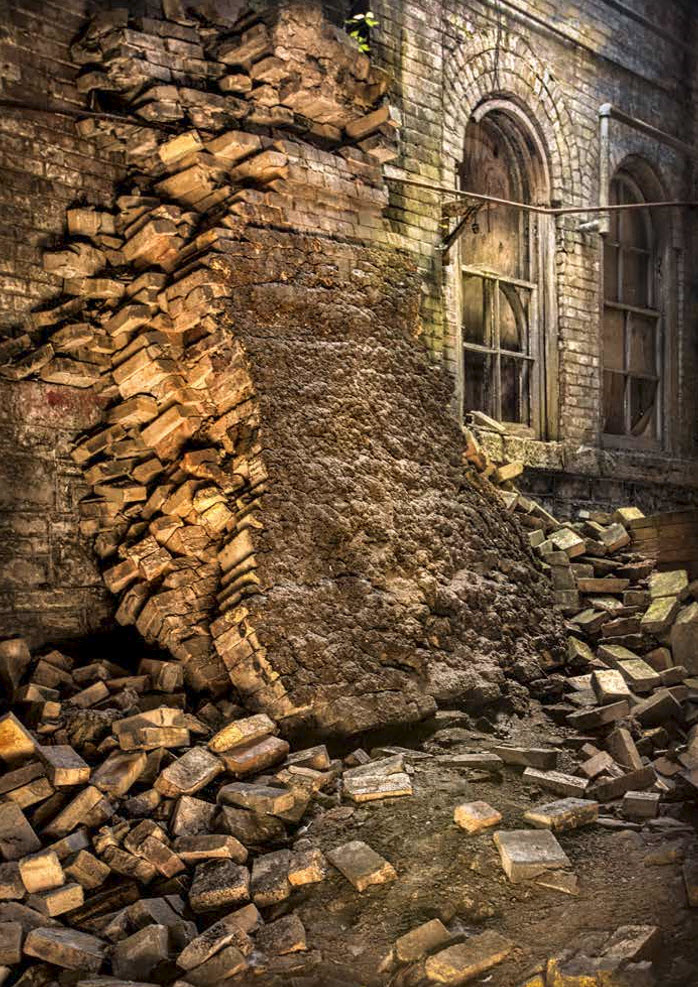
Oven bricks against an oven room window, Old Taylor Distillery, Woodford County. This brick building adjoining the distillery held the massive ovens that powered the plant. Here an early evening sun lights up the crumbling oven walls, contributing to a romanticism that the architect of the late nineteenth-century arched windows might have approved of.
Old Crow Distiller Room Boiler Room
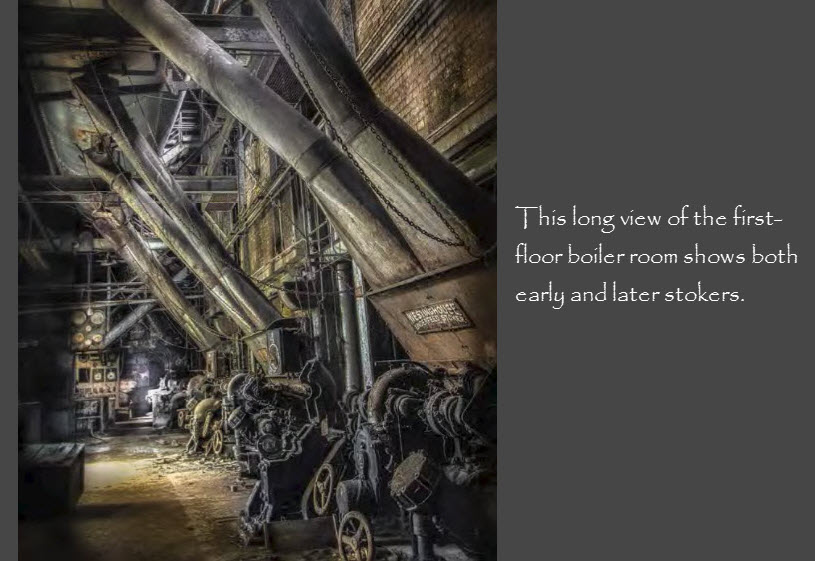

Boiler room, Old Crow Distillery, Woodford County. This long view of the first-floor boiler room shows both early and later stokers, a huge pipe suspended from the ceiling that delivered coal to the stokers, dials and meters, and the yellow brick that surrounded the steam pipes, much like those at the J. E. Pepper distillery.
T.W. Samuels Distillery Bottling Line
Bottling line split, T. W. Samuels Distillery, Deatsville. The split lines might convey boxes on one side and bottles on the other, which then come together efficiently.
T.W. Samuels Distillery Engine Room
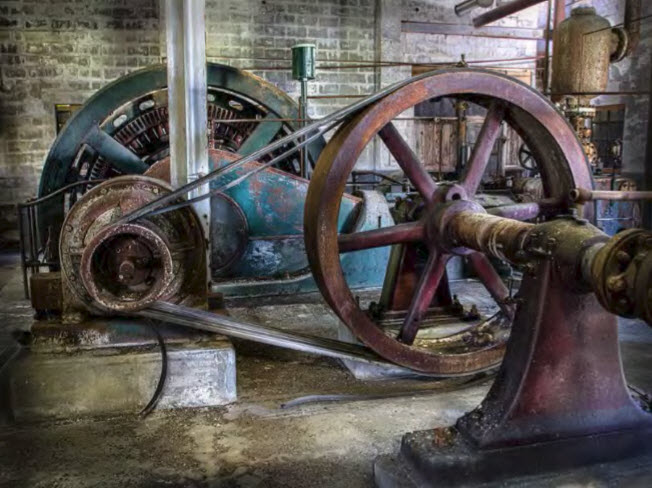

Engine room machine and pitcher, T. W. Samuels Distillery, Deatsville. The Samuels Distillery, like the Pepper Distillery, had relics like this old pitcher lying around that give us insight into the types of smaller auxiliary equipment that was used.
This lavish coffee table book is a celebration of bourbon’s heritage that will delight whiskey aficionados, history buffs, and art lovers alike. You can pick up your own copy of The Birth of Bourbon: A Photographic Tour of Early Distilleries here.


